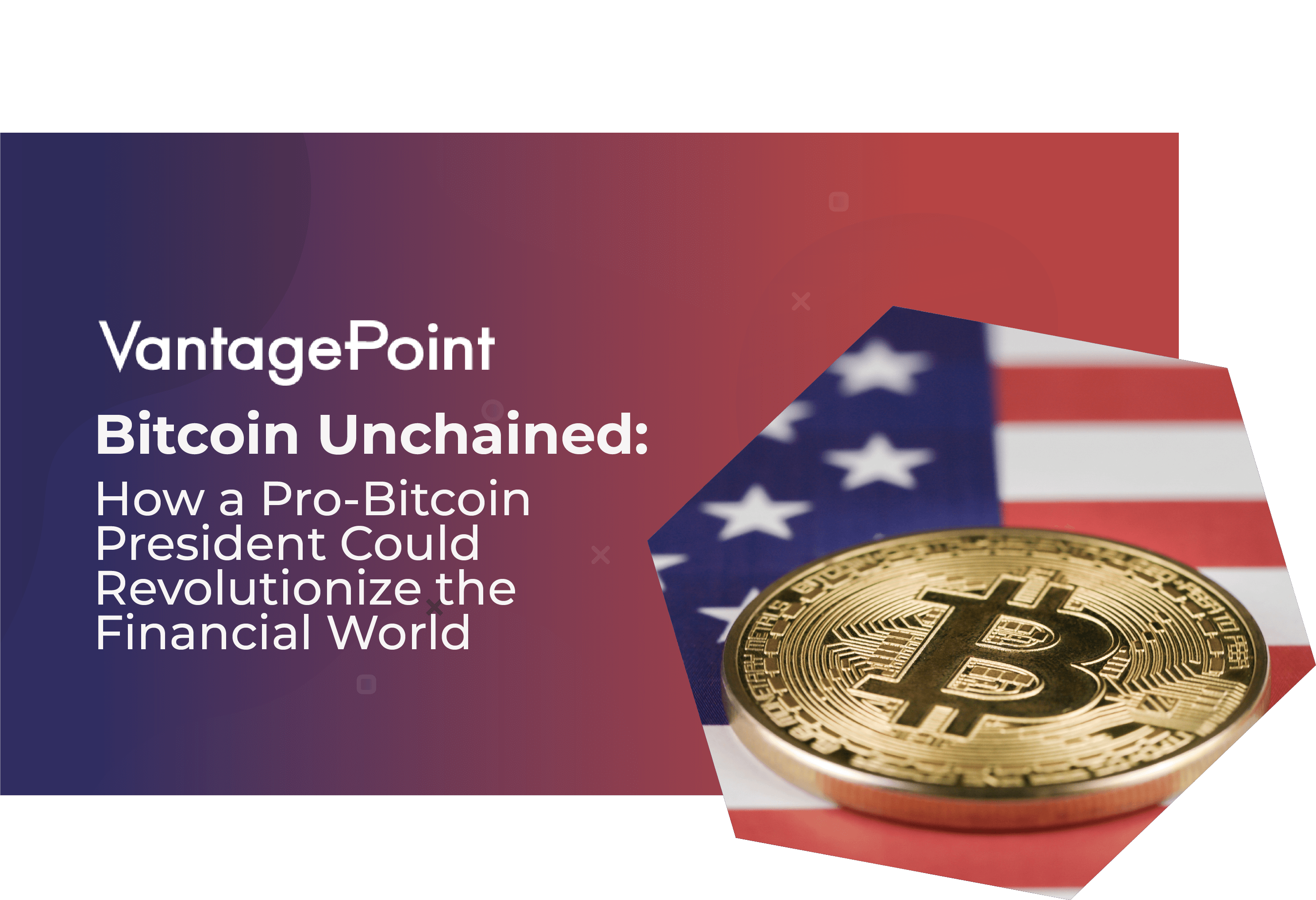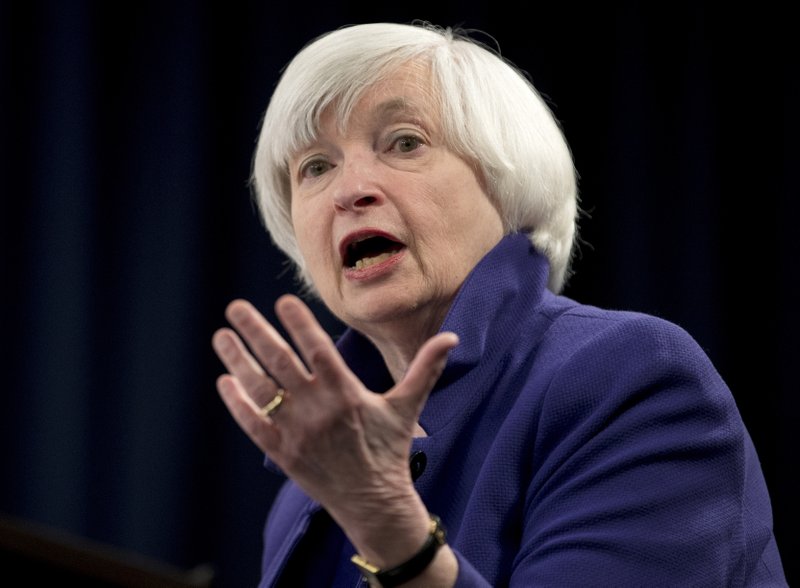Charlie Munger’s enduring legacy stands as a beacon of disciplined intellect, voracious curiosity, and principled investing. Born on January 1, 1924, in Omaha, Nebraska, his ascent from a small-town upbringing to a position of profound influence in global finance is a narrative of relentless study, principled thinking, and a relentless drive to understand how the world works. Munger’s life intersects with a pivotal era in investment history, where patient learning, contrarian insight, and a willingness to reshape established paradigms created one of the century’s most successful business empires. This article delves into Munger’s journey, his collaborations, his distinctive philosophy, and the concrete ways in which his ideas reshaped Berkshire Hathaway and the broader investing landscape.
Early life, education, and the formation of a lifelong intellect
Charlie Munger’s early years were molded by the era he grew up in—the tail end of the Roaring Twenties and the grim realities of the Great Depression that followed. Raised in a family environment that valued discipline and self-improvement, Munger imbibed the habit of lifelong learning at an early age. He pursued an education that would later prove indispensable in his multifaceted career, combining rigorous legal training with a broad-based appetite for literature, philosophy, and the sciences. The Great Depression’s challenges did not deter him; instead, they catalyzed a mindset oriented toward deep understanding, rational risk assessment, and the cultivation of resilience.
After his service in the U.S. Army Air Corps during World War II, Munger continued his scholarly journey at Harvard Law School, a period that sharpened his analytical faculties and reinforced a methodical approach to problem solving. The structure of legal reasoning—where inference, precedent, and precise interpretation of facts matter—would later inform his approach to investing, decision-making, and ethical considerations in business. The combination of legal training and broad intellectual curiosity gave Munger a unique toolkit: the ability to parse complex problems, anticipate counterarguments, and construct frameworks that could withstand scrutiny from multiple angles.
A core thread in Munger’s development was the habit of reading, reflection, and synthesis. His children and colleagues often recalled him as a “book with legs”—a vivid metaphor capturing his boundless curiosity and his eagerness to inhabit new frontiers of knowledge. He practiced a disciplined regimen of study, both within the formal realms of academia and in the informal exploration of diverse disciplines. This polymathic orientation became a defining feature of his career and a cornerstone of his collaborative work with Warren Buffett.
The Buffett–Munger partnership: a synergistic framework at Berkshire Hathaway
The partnership between Charlie Munger and Warren Buffett evolved into one of the most influential collaborations in corporate governance and value investing. While Buffett is often portrayed as the strategic visionary and the tireless capital allocator, Munger served as the architect of Berkshire Hathaway’s intellectual framework and strategic breadth. This partnership transcended a traditional employer-employee or even a conventional boardroom dynamic. It embodied a shared philosophy about what constitutes enduring value, how to allocate capital across a diversified portfolio, and how to cultivate a corporate culture that prizes patient, principled thinking over short-term gain.
Munger’s influence extended far beyond a mere job title. Although he held the official title of Vice Chairman of Berkshire Hathaway, his impact rippled through every layer of the organization. He championed a more expansive investment horizon, challenging Buffett’s early focus on undervalued stocks to consider the acquisition of entire companies and greater diversification across industries. This shift opened Berkshire Hathaway to opportunities in insurance, energy, consumer goods, and other sectors, enabling the conglomerate to build a portfolio that capitalized on durable competitive advantages and compounding cash flow over time.
A central tenet of this partnership was a shared respect for compounding and a preference for high-quality businesses with enduring moats. Buffett’s early investments, shaped by the teachings of Benjamin Graham, emphasized buying at attractive prices. Munger’s counsel encouraged going further: seek businesses with resilient franchises, strong brand power, and the potential for long-term free cash flow generation, even if the purchase price was fair rather than bargain-basement. This philosophy, often summarized in Buffett’s annual reports, crystallized into a practical approach: buy wonderful businesses at fair prices, rather than merely fair businesses at wonderful prices. The two leaders together designed Berkshire Hathaway’s approach to value creation—one that blends rigorous financial discipline with a willingness to explore strategic acquisitions that can transform an enterprise’s trajectory.
Munger’s contributions also extended to how Berkshire Hathaway approached diversification. Under his influence, the company moved beyond a narrow focus on value stocks to embrace a broader spectrum of assets, including insurance operations, manufacturing, distribution, and energy. This broad-based strategy created a platform that could absorb shocks, stabilize earnings across cycles, and unlock synergies through disciplined capital allocation. Munger’s insistence on thoughtful risk assessment and his capacity to connect ideas across disciplines helped shape Berkshire Hathaway’s identity as a resilient, intellectually driven conglomerate rather than a collection of isolated holdings.
Several landmark investments and acquisitions underscored Munger’s approach. Wesco Financial Corporation, acquired by Berkshire Hathaway in 1983, exemplified the synergy of financial services and disciplined governance, with Munger serving as Wesco’s chairman for a period. See’s Candies, acquired in 1972, demonstrated the value of brand equity and durable cash flows—an enduring consumer brand that could weather economic cycles. The Buffalo News purchase in 1977 illustrated a strategy of diversification that transcended traditional insurance and manufacturing, signaling Berkshire’s willingness to invest in media amidst evolving market dynamics. Nebraska Furniture Mart (1983) reflected a strategic tilt toward dominant market positions in consumer retail, reinforcing the preference for businesses with entrenched competitive advantages.
Other notable investments shaped by Munger’s discernment included Precision Castparts (acquired in 2016), a company operating in complex metal components with a durable niche, and BNSF Railway (acquired in 2009), a cornerstone asset whose network economics and long-haul logistics capabilities underscored Berkshire’s strategic bet on fundamental infrastructure. Duracell, acquired through a stock swap with Procter & Gamble in 2016, showcased the value of brand strength and stable cash flows in consumer staples. The Apple investment, initiated in 2016, reflected a recognition of Apple’s ecosystem strength, brand loyalty, and cash generation, aligning with Munger’s emphasis on enduring competitive advantages even in technology sectors.
Together, Buffett and Munger built a portfolio that exemplified the fusion of rigorous analysis with a willingness to rethink conventional boundaries. They prioritized businesses with clear, durable competitive advantages, robust and scalable cash flows, and strong governance that could sustain long-term value. The model they cultivated was not about chasing the latest market fad but about constructing a durable engine for wealth creation—an engine fueled by patient capital, disciplined risk management, and a relentless pursuit of understanding.
Planck knowledge versus chauffeur knowledge: a core dialectic of mastery
One of Charlie Munger’s most enduring conceptual contributions is the Planck versus chauffeur knowledge analogy. This distinction crystallizes his view of genuine expertise versus the superficial appearance of knowledge. Planck knowledge is the deep, authentic understanding earned through years of rigorous study, disciplined practice, and the integration of complex ideas across disciplines. It represents the kind of mastery that can withstand scrutiny, adapt to new information, and inform sound decision-making under uncertainty. Chauffeur knowledge, by contrast, describes surface-level familiarity—people who can recite theories or imitate the actions of others without truly grasping the underlying principles. They may memorize lectures, mimic jargon, and appear proficient, but when confronted with real-world complexity, they struggle to apply knowledge coherently.
Munger often used the Planck–chauffeur dichotomy to highlight the risk of confident-but-superficial expertise. In the world of finance, Planck knowledge translates into a deep, nuanced understanding of businesses, markets, and the forces that drive durable competitive advantages. It means recognizing the intrinsic value of a company, evaluating its moats, and judging the quality of its management and capital allocation over the long term. Chauffeur knowledge, in his framing, yields only a veneer of competence: the appearance of savvy without the substance required to navigate unpredictable environments.
This distinction has direct implications for investing and decision-making. Planck knowledge enables an investor to synthesize learnings from multiple domains—economics, psychology, statistics, engineering, and ethics—and to apply them to real, imperfect information. It fosters humility, because the depth of understanding reveals the complexity of markets and the limits of one’s ability to predict outcomes with precision. Chauffeur knowledge, by contrast, can breed overconfidence, reliance on borrowed authority, and a tendency to chase short-term signals rather than fundamental signals of value.
Munger’s articulation of this dichotomy serves as a guiding compass for both personal and professional development. In his view, the rewards favor those who commit to genuine learning, who are willing to do the hard work of mastering intricate subjects, and who maintain an honest appraisal of what they do not know. The world, he suggested, tends to reward those with true knowledge—the individuals who have earned their stripes through diligence, curiosity, and disciplined inquiry. This philosophy undergirds his advice to readers and investors to pursue continuous improvement, cultivate broad mental models, and resist the allure of quick, superficial wins.
The Planck–chauffeur narrative also offers a practical lens for evaluating experts and advisors. It invites readers to ask: Do you trust someone who can articulate a reasoned, integrated understanding of a problem, or someone who can only repeat a familiar script, rely on conventional wisdom, or mimic the actions of others? In investing, the preference is clear: prioritize those who exhibit Planck knowledge—those who have earned the right to speak with authority through a lifetime of study and practice—over those who merely speak loudly or with confidence.
Munger’s own career embodied this principle. Across decades of analysis, debate, and collaboration, he demonstrated a capacity to develop deep insights by connecting ideas from diverse domains. His critiques of common financial metrics and his insistence on practical, results-oriented thinking reflect a Planck-level engagement with problems. Yet he remained aware of the limits of knowledge, frequently emphasizing that the truly wise person recognizes what they do not know and remains open to new evidence. This blend of conviction and humility shaped how he approached risk, valuation, and strategic decision-making at Berkshire Hathaway and beyond.
Mungerisms: distilled wisdom on life and investing
Charlie Munger’s aphorisms have become touchstones for readers and practitioners seeking concise, actionable wisdom. His statements, often delivered with wit and blunt candor, capture a distinct philosophy of learning, decision-making, and personal growth. Among his most famous maxims is the assertion that, in life, continuous reading and a broad appetite for knowledge are indispensable. He has often proclaimed that “In my whole life, I have known no wise people who didn’t read all the time.” This emphasis on reading underscores a broader belief: sustained intellectual nourishment fosters better judgement, sharper judgment, and a more mature outlook on risk and opportunity.
Another noteworthy Munger maxim is the call to daily improvement: “Spend each day trying to be a little wiser than you were when you woke up.” This simple, daily discipline reinforces a growth mindset, a relentless pursuit of incremental improvement, and a refusal to stagnate. The idea is not to chase genius in grand leaps but to accumulate wisdom gradually through disciplined effort, reflection, and application.
Munger’s bluntness also extended to his critiques of common corporate finance practices. He did not shy away from challenging metrics that hide underlying economics. One stark example is his critique of EBITDA and the practice of “adjusted EBITDA.” He described the attempt to adjust EBITDA as a sign of “intellectual dishonesty” and a display of “a big head of hair” and “talk without substance.” His critique warned against inflated representations of profit and the misalignment between accounting conventions and genuine economic reality. The message was clear: investors should seek a transparent understanding of cash flows, not polished but misleading metrics that obscure true performance.
Beyond these notable sayings, Munger offered thoughtful perspectives on risk, decision-making, and ethics. He stressed the importance of long-term thinking, the value of diverse mental models, and the need to resist social and psychological biases that distort judgement. His commentary on risk is particularly relevant in how he framed the trade-offs between potential gains and the probability-weighted costs of mistakes. He argued that prudent risk-taking involves recognizing the scale of consequences and the likelihood of different outcomes, coupled with a willingness to forgo attractive but uncertain opportunities in favor of more predictable, durable sources of value.
Notable investments and business decisions reflected these principles. His emphasis on durable competitive advantages, strong branding, and cash-generating capabilities translated into a preference for businesses with predictable earnings, robust moats, and the potential for structural growth over time. Munger’s voice in the Berkshire Hathaway ecosystem reinforced a culture of intellectual rigor, moral accountability, and patient, disciplined capital allocation. These values continue to inspire investors, executives, and students of finance who seek to align financial success with thoughtful reasoning and ethical considerations.
Notable investments and portfolio moves shaped by Munger’s influence
Munger’s counsel and strategic instincts helped to steer Berkshire Hathaway toward a portfolio characterized by resilience, durable brand value, and the ability to generate cash flows across cycles. This section revisits several emblematic investments and acquisitions that illustrate his influence and the enduring logic behind Berkshire’s diversified empire.
Wesco Financial Corporation (1983)
Wesco Financial stood out as a diversified financial services company under Berkshire’s umbrella. Munger’s stewardship as chairman helped guide the company’s governance practices and strategic direction, enabling Berkshire to gain exposure to insurance-like cash flows, risk-managed returns, and a diversified financial footprint. The decision to integrate Wesco into Berkshire’s broader ecosystem reflected a synthesis of risk-aware capital allocation, a focus on core competencies, and an appetite for stable earnings streams that complement the conglomerate’s overall risk profile. Wesco’s ultimate trajectory demonstrated how strategic alignment with Berkshire’s long-term orientation could unlock value beyond traditional insurance operations and core manufacturing assets.
See’s Candies (1972)
The See’s Candies investment stands as a classic example of brand-driven value. Munger recognized the enduring cash-generating power of a well-established brand with loyal customer demand. See’s Candies embodied the principles of durable moats and reliable cash flow that Berkshire sought in consumer staples and discretionary purchases. The brand’s ability to command premium pricing and maintain high-quality standards created a durable advantage that could endure economic fluctuations, making it a natural fit for Berkshire’s patient capital approach. The See’s acquisition remains a cornerstone example of how value investing can be amplified by brand strength and a disciplined emphasis on long-run profitability.
The Buffalo News (1977)
Berkshire’s acquisition of The Buffalo News illustrated the firm’s willingness to diversify into media and information services despite industry challenges. Munger’s balanced view of risk, combined with a belief in the intrinsic value of well-managed operations, supported the decision to pursue a business with a clear local market position and a stable cash flow profile. The newspaper asset contributed to Berkshire’s broader mission of constructing a diversified portfolio anchored by durable competitive advantages, even in sectors facing secular pressures. The Buffalo News decision also highlighted Berkshire’s ability to apply capital to businesses where strong management and governance could drive efficiency and long-term value creation.
Nebraska Furniture Mart (1983)
Nebraska Furniture Mart epitomized Munger’s preference for dominant market players in favorable geographies. The retailer’s strong local presence, clear competitive advantage, and cash-generating potential aligned with Berkshire’s long-term value thesis. The acquisition reinforced the strategic theme of owning companies with enduring moats, scalable operations, and the opportunity to generate consistent returns across cycles. The Nebraska Furniture Mart investment became a model for how Berkshire could blend retail strength with a disciplined approach to capital allocation.
Precision Castparts Corp. (2016)
Precision Castparts represented a sophisticated manufacturing and engineering enterprise with a complex but highly defensible niche in metal components. Munger’s emphasis on durable competitive advantages, technical specialization, and the potential for leadership in a specialized supply chain contributed to Berkshire’s decision to acquire the company. The investment underscored a preference for high-quality industrial assets with long-term demand drivers, illustrating how Berkshire could apply capital to segments with significant barriers to competition and stable demand patterns.
BNSF Railway (2009)
The Burlington Northern Santa Fe (BNSF) acquisition marked a watershed in Berkshire’s portfolio strategy, highlighting the enduring value of rail infrastructure and the vital role of logistics networks in the economy. A railway platform offers stable, long-cycle cash flows, favorable regulatory dynamics, and the potential for ongoing capital reinvestment to sustain network advantages. Munger’s input helped shape Berkshire’s recognition of railroads as core infrastructure with strategic value, reinforcing the idea that essential services with high barriers to entry can drive durable earnings and strategic resilience.
Duracell (2016)
Duracell’s inclusion into Berkshire’s holdings, through a stock swap with Procter & Gamble, reflected the appeal of a globally recognized brand with strong cash generation in the consumer staples space. Munger’s preference for brands with broad consumer appeal and reliable margins was a guiding principle here. Duracell’s steady demand and brand loyalty contributed to Berkshire’s portfolio resilience, particularly in terms of cash flow stability and diversification across consumer-facing industries.
Apple Inc. (2016)
While often associated with Buffett’s influence, Munger also supported Berkshire Hathaway’s investment in Apple, recognizing the technology giant’s brand strength, ecosystem, and cash-generating power. The decision to allocate capital to Apple reflected a recognition of durable competitive advantages in a high-growth tech landscape, provided the company could sustain its innovation engine, maintain its ecosystem, and continue to generate substantial free cash flow. Apple’s holdings demonstrate how Berkshire could embrace modern, tech-enabled paradigms while remaining anchored in value investing principles.
These investments and strategic moves illustrate a consistent throughline: the pursuit of durable competitive advantages, strong governance, and compelling cash-flow profiles. Munger’s perspective often pushed for expansion beyond traditional value stocks into assets and businesses with meaningful long-term strategic value, synergistic potential, and the capacity to compound wealth over extended horizons. The result was a Berkshire Hathaway that could weather macroeconomic headwinds, seize opportunities across cycles, and maintain a centralized philosophy anchored in rationality, patience, and a robust intellectual framework for evaluating value.
Writings, public discourse, and the legacy of a modern thinker
Charlie Munger did not author a traditional, standalone volume in the same way many investors have. Instead, his influence emerged through speeches, interviews, and his enduring presence in Berkshire Hathaway’s annual letters. These communications, celebrated for their clarity, wit, and incisive logic, have guided readers toward practical wisdom about investing, decision-making, and ethics. The absence of a single canonical Munger book does not diminish the depth of his insights; rather, it underscores the breadth of his intellectual pursuits and the accessibility of his ideas through multiple formats.
One of the most widely appreciated compilations of Munger’s wisdom is a curated collection of his talks, essays, and reflections, which has served as a portable guide for students of value investing and general management. His writings emphasize the discipline of lifelong learning, the value of cross-disciplinary thinking, and the importance of prudent risk-taking grounded in a deep understanding of underlying business mechanics. A recurring theme across these materials is a relentless curiosity about how systems work, a commitment to practical rationality, and an insistence that genuine knowledge demands year after year of study and experience.
In addition to his own speaking and writing, Munger’s ideas have been amplified by collaborations with Warren Buffett. The Buffett–Munger dynamic—characterized by mutual respect, complementary strengths, and shared values—produced a framework within which Berkshire Hathaway could articulate a coherent investment philosophy to shareholders and the public. The results of this collaboration have shaped the perception of long-term investing as both an art and a science: a synthesis of rigorous analysis, disciplined capital allocation, and ethical governance that prioritizes sustained value creation over episodic market triumphs.
Munger’s legacy also extends to the broader business and investment communities. His insistence on mental models, interdisciplinary thinking, and the humility to acknowledge what one does not know has inspired countless readers, students, and practitioners to pursue deeper understanding. The takeaway message is not merely about which stock to pick or how to structure a portfolio; it is a broader invitation to cultivate a life of deliberate learning, critical thinking, and principled decision-making under pressure. This approach, rooted in a blend of intellectual rigor and practical wisdom, continues to influence readers seeking to emulate a more thoughtful, patient, and effective approach to business and investment.
Daily habits, growth mindset, and the pursuit of wisdom
Beyond his investment decisions and boardroom contributions, Charlie Munger’s daily rituals and habit of continuous learning defined the cadence of his life. He pursued knowledge with an unrelenting appetite, embracing a growth mindset that prized improvement over dogmatic certainty. He treated knowledge as a tool for problem-solving, decision-making, and the ability to anticipate and navigate the complexities of business and life. The idea that one can grow wiser with each passing day became a practical philosophy for many who sought to model their own routines after his example.
Munger’s daily regimen encompassed substantial reading, thoughtful reflection, and the practical application of insights to real-world situations. He did not simply accumulate information; he sought to organize it into mental frameworks that could be drawn upon when confronted with new challenges. The emphasis on learning across domains—economics, law, psychology, philosophy, engineering, and science—reflected a holistic belief in the power of multidisciplinary thinking. By weaving together diverse strands of knowledge, Munger built a cognitive toolkit able to parse complex problems with nuance and depth.
The “book with legs” descriptor offered a vivid reminder that books were not passive sources of information for him but active catalysts for thought. He believed in translating reading into action—into better questions, improved judgments, and more informed decisions. This approach helped shape Berkshire Hathaway’s culture: a company that valued rigorous analysis, thoughtful debate, and decisions anchored in a broad understanding of how different industries intersect and how macro forces shape micro outcomes.
The practical implications of Munger’s thinking extend to risk management and capital allocation. In a world where information is abundant and markets move rapidly, his philosophy of deep understanding and cautious, evidence-based decision-making remains a powerful antidote to hype and speculation. The emphasis on patient capital, long-run orientation, and a willingness to forgo immediate opportunities in favor of durable, recurring value is as relevant today as ever. It is a reminder to investors and executives alike that the steady pursuit of wisdom can outpace the volatility of markets and deliver meaningful returns over time.
Conclusion
Charlie Munger’s life and work embody a philosophy of learning, integrity, and strategic clarity that transcends the confines of a single industry. From his early days in Omaha to his transformative partnership with Warren Buffett at Berkshire Hathaway, Munger’s insistence on genuine knowledge, cross-disciplinary thinking, and disciplined risk management created a durable blueprint for success. His Planck–chauffeur distinction offers a lasting reminder that true mastery comes from deep, earned understanding rather than polished surface appearances. The enduring appeal of Munger’s approach lies in his emphasis on reading, daily improvement, and a commitment to building a life and career grounded in rationality, ethics, and practical wisdom.
The investments and strategic moves he helped shape—ranging from See’s Candies and Nebraska Furniture Mart to precision manufacturing and global brands—underscore a consistent logic: seek durable moats, prioritize high-quality cash flows, and allocate capital with a patient, long-term horizon. Munger’s influence extended beyond numbers and assets; it shaped how a generation of investors thinks about value, risk, and the ethical responsibilities that accompany wealth creation. Through his writings, speeches, and the living example of a mind dedicated to constant learning, Charlie Munger left an imprint that continues to guide, challenge, and inspire those who aspire to think more clearly, act more wisely, and contribute more meaningfully to the world of business and investment. May his counsel and example endure as a touchstone for disciplined intelligence and steadfast integrity in an ever-changing financial landscape.




